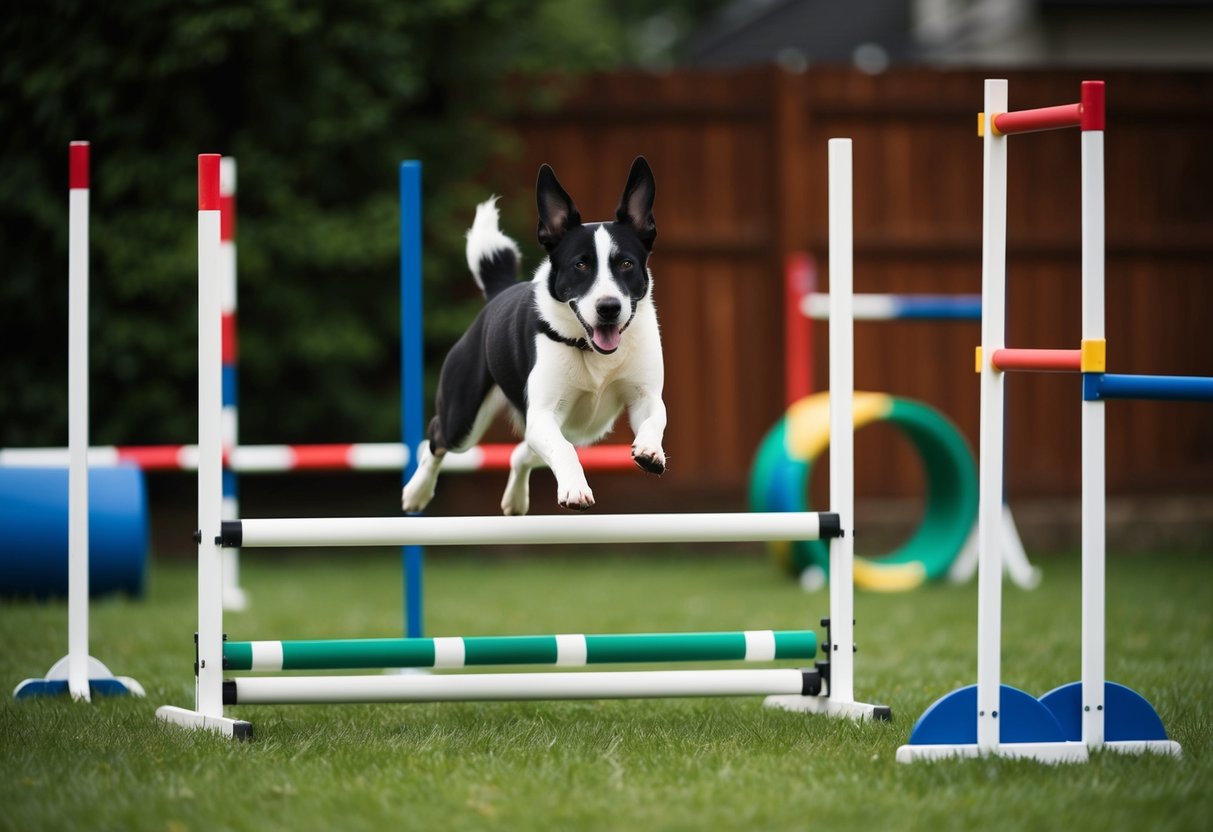
Building Your Own Agility Equipment
Creating a DIY agility course allows for a rewarding project that can engage your dog in physical and mental activities. Selecting the right materials and constructing durable obstacles are crucial steps in this process.
Construction Tips for Durable DIY Obstacles
When building a dog agility course, durability is key. Use weather-resistant materials like treated wood or PVC pipes to withstand outdoor conditions. Ensure joints are securely fastened to avoid accidents during training sessions. Sand any rough edges to prevent injuries.
Lightweight materials make obstacles easier to move. Balance is essential; heavier bases can prevent tipping. Modular designs offer flexibility, allowing for easy rearrangements to keep your dog interested.
Finding and Repurposing Materials
Finding materials for constructing a dog agility course doesn’t have to be expensive. Look for PVC pipes, wooden pallets, or old tires from local recycling centers or community groups.
Repurpose items like old broomsticks as hurdle supports. Garden pots filled with sand can serve as sturdy bases. Creativity can stretch your budget, making agility training accessible.
Consider using household items in innovative ways to create unique obstacles. Ensure all materials used are safe, non-toxic, and appropriate for your dog’s size and agility level, enhancing both challenge and enjoyment.
Training Techniques for Agility Success
Agility training requires a combination of effective teaching techniques and understanding dog behaviors. Basic commands lay the foundation, positive reinforcement strengthens desired behaviors, and progressively challenging routines build skills.
Mastering Basic Commands
Before delving into complex agility sequences, dogs must have a strong grasp of basic commands such as “sit,” “stay,” “come,” and “heel.” These commands serve as critical tools for communication between the handler and the dog during training. Each command should be consistently practiced in various environments to ensure the dog responds reliably. Consistency is key, and handlers should use the same words and gestures to avoid confusion. Regular sessions incorporating these commands will make agility training smoother and more enjoyable. Practicing these commands with gradual increases in distractions also enhances focus and obedience, essential for navigating agility courses effectively.
Applying Positive Reinforcement
Positive reinforcement is crucial in agility training, encouraging dogs to perform desired actions willingly. When a dog successfully completes a task, offering a treat or verbal praise reinforces that behavior, making it more likely to be repeated. Timing is important; rewards should be given immediately to create a clear association between action and reward. Consistent use of positive reinforcement helps build a strong bond and trust between the dog and the handler. Treats are popular choices; they should be small and given frequently during the initial training stages. As the dog becomes more skilled, gradually reduce treats but maintain verbal praise or affection to sustain motivation.
Progressing from Simple to Complex Routines
Starting with simple exercises helps build confidence and understanding in dogs. Basic agility obstacles like tunnels or low jumps should be introduced gradually. As the dog masters these elements, more complex sequences can be added. Handlers should focus on one new skill at a time, ensuring the dog is comfortable before progressing. Patience is essential; rushing the process can lead to confusion or reluctance. Each dog progresses at its own pace; observing the dog’s response and adjusting training accordingly is important. Establishing a routine with gradual increases in difficulty will keep the training engaging and rewarding.



